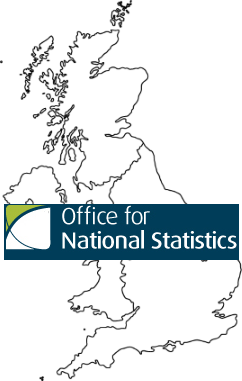Net migration in the year ending September 2019 estimated at +240,000
The Office for National Statistics (ONS) has today released its latest migration statistics quarterly report.
 You can read the report online here.
You can read the report online here.
The headline finding is that net migration in the year ending September 2019 was estimated at +240,000. Over the year, immigration to the UK was estimated at 642,000, while 402,000 people emigrated.
As noted by The Independent, the ONS found that non-EU net migration has reached its highest level since 2004.
Jay Lindop of the ONS Centre for International Migration explained: "While long-term net migration, immigration and emigration have remained broadly stable since the end of 2016, different trends have emerged. EU net migration has fallen, while non-EU net migration has gradually increased since 2013 and is now at the highest level since 2004."
"Since 2016, immigration for work has decreased because of fewer EU citizens arriving for a job. Meanwhile, immigration for study has gone up and is now the main reason for migration. This is driven by more non-EU students arriving, specifically Chinese and Indian."
The main points from today's ONS report are as follows:
• EU net migration has fallen since 2016, although more EU citizens still arrive long-term than leave.
• This is mostly driven by a decrease in those coming to the UK, alongside a gradual increase in the number of EU citizens leaving the UK over the same time period.
• The number of EU citizens coming to the UK for work-related reasons has decreased to the lowest level since 2004, driving the overall fall in immigration for work since 2016.
• The decrease was initially a result of fewer EU citizens coming to the UK looking for work; however, since 2018, the number of people arriving with a definite job has also fallen.
• Non-EU net migration has gradually increased since 2013 and is now at the highest level since 2004.
• This is because of an increase in those coming to the UK, now at the highest level on record, with the number of non-EU citizens leaving the UK over the same time period remaining broadly stable.
• The increase since 2016 is mainly because of a gradual rise in the number of non-EU citizens coming to the UK for formal study; this is a trend reflected in all available data sources, with sponsored study visa applications for universities at the highest level on record.
• Since 2013 all available data sources have shown gradual increases in the number of non-EU citizens coming to the UK for work-related reasons.
In response to the ONS figures, the Migration Observatory at the University of Oxford said that non-EU countries are once again the main contributor to immigration in the UK by some distance, though the impacts of the Government's new post-Brexit immigration system on future migration numbers remain uncertain.
Madeleine Sumption, Director of the Migration Observatory, said: "Immigration from EU countries has already fallen substantially since the referendum. Compared to current policy for EU citizens, the government's immigration plan is much more restrictive, as well as more expensive for both employers and workers. That means the new policy should at least in theory significantly reduce EU immigration in the coming years—but migration levels are notoriously difficult to predict, and policy is not the only thing that affects migration."
"The government plans to liberalize work visas for non-EU citizens, which may increase the number of non-EU workers, but exactly how much is hard to say. It's important to remember that currently most non-EU citizens who move long term to the UK are actually not on work visas. Most come under other routes such as international study."
"Because it's so hard to predict future migration levels, the overall impact of the government's policy plan on numbers is anyone's guess."